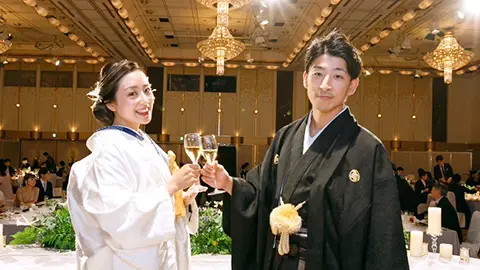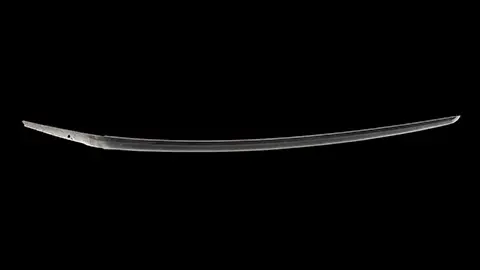VOL.194 JULY 2024
JAPANESE SMALL AND MEDIUM ENTERPRISES LEADING THE WORLD
[Treasures of Japanese Culture] The Charms of Japanese Monsho Crests: Simple Designs Infused with Traditional Beauty
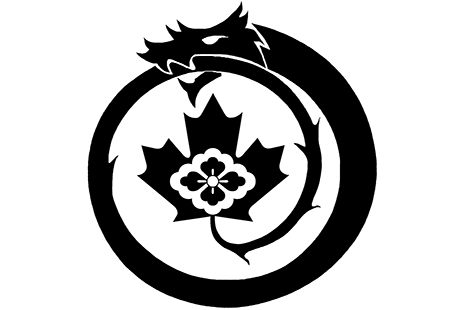
Photo: Katsura Fukuryu Office
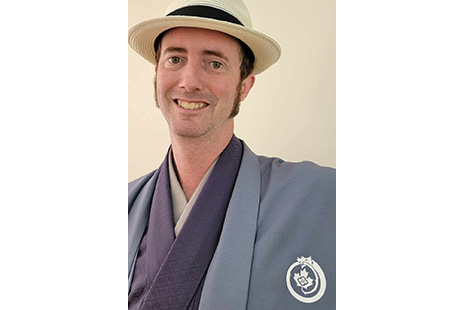
Photo: Katsura Fukuryu Office
Rakugo storyteller KATSURA Fukuryu, originally from Canada, designed a crest of his very own, featuring motifs based on his stage name, when he was still performing as an amateur. In this issue, he shares his thoughts on the appeal of Japanese crests, including kamon family crests and geimon* artistic performers’ crests.
In Japan, most families have crests (kamon) that have been handed down from generation to generation. You can see them featured on kimonos worn by members of the extended family on ceremonial occasions like weddings and funerals, for example. While the family crests found in the West are often colorful and complex, with images of lions, unicorns, and so on, Japanese kamon tend to feature simple black-and-white designs. Many have motifs based on flowers, plants, birds, the moon, and so on, with easily recognizable forms. There are said to be over 30,000 designs, and it seems really fascinating that each of them has some significance related to the family’s roots.
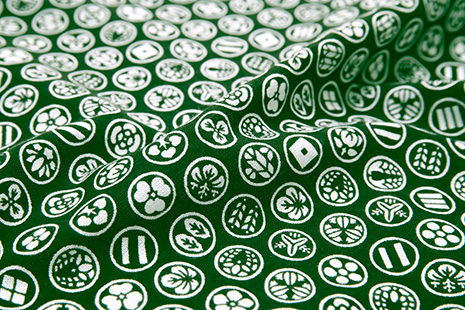
Each school of Rakugo actually has its own crest, called a geimon, too. These crests are handed down from teachers to generations of their disciples and displayed on their own kimono, as well. In my case, though, I was familiar with that culture from the time I was an amateur Rakugo storyteller, so when I had my kimono made, I designed my own geimon crest for it.
At the time, I was using the stage name Duke Canada, picking out kanji characters for it that could be read with similar pronunciations: Ryuku Kanada, written as “龍来彼方゛.” The first two characters mean “dragon” and “come,” and the last two together would ordinarily be read as kanata, meaning a distant direction or foreign land. By voicing the T as a D, I made it refer to Canada specifically, so all together, the name suggests “A dragon from Canada.” The dragon here also relates to my family’s Scottish origins and the lizard featured in my ancestors’ family crest. I designed my own geimon crest based on this name that I made up. The way the dragon holds its tail in its mouth to form a circular arc expresses the concept of eternity. I also placed a maple leaf, as featured on the Canadian flag as well, in the middle of it. While it was challenging to incorporate these humorous and complicated double meanings with a simple design, it was also fun.
Later, I became a disciple of Rakugo master KATSURA Fukudanji, seeking to become a professional Rakugo storyteller. Then, I was given the stage name KATSURA Fukuryu, with Fukuryu written as “福龍,” combining fuku (good fortune) from my teacher’s name with ryu (dragon) from my original amateur stage name. The geimon crest for our school of Rakugo features a hanabishi pattern with a flower petal pattern arranged around a diamond shape. My teacher took a liking to my original crest design, though, and I was given approval to use a crest combining my original design with the official crest of the Rakugo school after I became an apprentice. So, at this point, I revised my original design to include a hanabishi flower pattern in the middle of the maple leaf. When I perform together with others from our Rakugo school, I wear a kimono featuring the hanabishi crest to show unity with the group. When I give solo performances, however, I wear a kimono adorned with my own original crest.
When you live in Japan, you might notice various crests all around the cities and streets. These include not only kamon family crests, but a variety of other crests as well, associated with prefectures, schools, companies, and so on. I like how, even without Japanese language skills, you can seem to imagine something about their significance by considering the motifs they use.
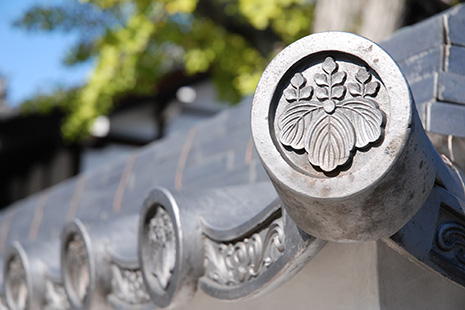
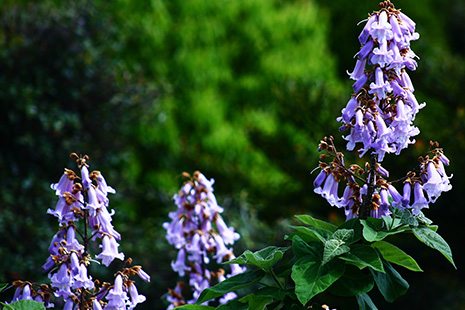
For anyone thinking it would be fun to design an original kamon crest of their own, I might recommend considering designs that express something about your home country or your family’s roots. It can be challenging to create designs that incorporate multiple motifs in a small round space, but you will be sure to end up with a totally unique crest.
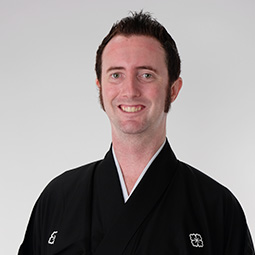
KATSURA Fukuryu
He is a Rakugo*** storyteller originally from Canada. In October 2016, he joined the KATSURA Fukudanji Ichimon (House), and became the 11th disciple of KATSURA Fukudanji. He is based in the Kansai region****, and performs at Yose (Rakugo theaters) throughout Japan. With the goal of showing the charm of Rakugo to the world, he has appeared in shows in Las Vegas, San Francisco, and Hawaii in the United States, as well as in Canada and the Philippines.![]()
*In Japan, monsho (crests) are also referred to as mon.
**Typical example of a Japanese kamon family crest, featuring a design with a motif based on the blossoms and leaves of the kiri (paulownia or empress tree)
***Rakugo: Traditional storytelling art of Japan created over 400 years ago. For a more detailed discussion, see the May 2024 issue of HIGHLIGHTING Japan.
****Kansai region: The area roughly around Kyoto, Osaka, Kobe, and their neighboring prefectures
by KATSURA Fukuryu
Photo: Katsura Fukuryu Office; PIXTA
